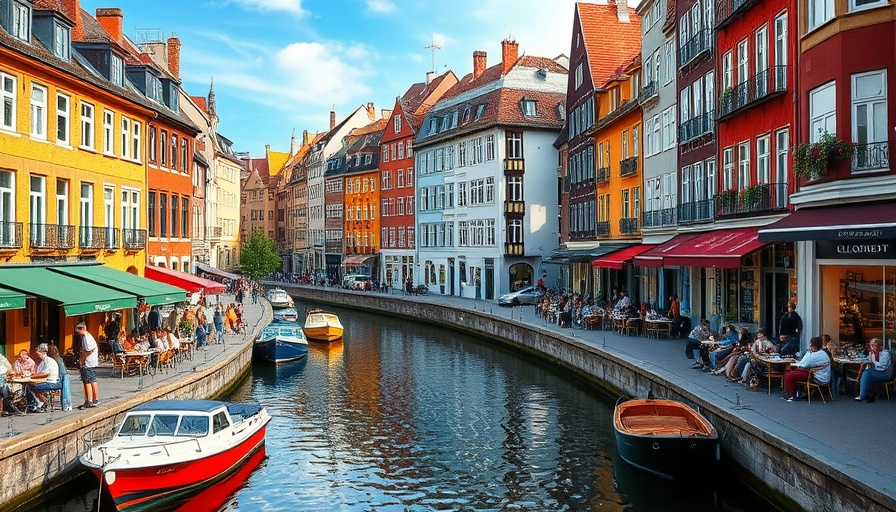
The Rise of Copenhagen: A New Standard for Global Living
In an exciting shift that will certainly catch the attention of global urban enthusiasts, Copenhagen, Denmark, has claimed the title of the world's most livable city, dethroning Vienna after three consecutive years at the top. Based on the latest annual survey by the Economist Intelligence Unit (EIU), this Scandinavian capital stands out for its exceptional scores in stability, education, and infrastructure, raising the bar for cities around the globe.
What Makes Copenhagen Shine?
Copenhagen's ascendance is a testament to its thriving infrastructure and a robust focus on education and public health. As highlighted by the EIU, Denmark’s capital scored perfect marks in several categories, showcasing a city that is as modern as it is historic. The smooth blend of progressive urban planning and deep-rooted cultural heritage informs both the daily lives of its residents and the impression it leaves on visitors.
But it’s not just the Danes who hold the spotlight; Vienna and Zurich have also secured their positions in the upper echelon, tied for second place. Both cities are recognized for their rich cultural environments and high quality of life. However, Vienna's drop in the ranking is notable and underscored by declining stability in the wake of recent security concerns, including incidents that have shaken the city's reputation for safety.
A Closer Look at Stability and Its Importance
The concept of stability is crucial for determining the livability of a city. According to Barsali Bhattacharyya from the EIU, global stability scores have remained flat, with major cities like London, Manchester, and Edinburgh experiencing drops due to social unrest and anti-immigration sentiments fueled by misinformation. The push against societal stability highlights the need for cities to maintain robust security measures and community cohesion to ensure their livability ranking. In contrast, Copenhagen’s approach emphasizes a harmonious urban living environment that addresses safety without any drastic measures.
Future Trends in Urban Livability
As we move forward, the importance of stability will undeniably shape future rankings in livability. Cities around the world must prioritize public health and community engagement to maintain their standings. After all, the ranks can change swiftly: for instance, Calgary’s plunge from No. 5 to No. 18 shows how quickly circumstances can alter public sentiment regarding safety and quality of life.
What This Means for Philadelphia's Top Wage Earners
For Philadelphia's top wage earners, the newly crowned livability of Copenhagen raises questions about urban investment and lifestyle choices. Those seeking new adventures or even international opportunities might be inspired to consider what makes a thriving metropolis. Copenhagen’s emphasis on a balanced life, impressive public services, and accessible cultural experiences might even inspire local initiatives aimed at enhancing urban life here in Philadelphia.
Local Implications: What Can Philadelphia Learn?
As residents of Philadelphia assess their urban environment, there are vital lessons to absorb from Copenhagen's victory. Improving factors such as public transportation, educational systems, and public health initiatives could enhance the quality of life for its citizens. Local policymakers and community leaders should consider what practical steps can be taken to bridge any gaps and foster a more livable city that could compete on the global stage.
In conclusion, the rise of Copenhagen as the world's most livable city isn't just a win for Denmark; it's a wake-up call for cities worldwide, including Philadelphia, to strive for excellence in urban living. By learning from Copenhagen’s strengths in education, healthcare, and infrastructure, we can collectively work towards creating a community that prioritizes the well-being of its residents.
 Add Row
Add Row  Add
Add 




Write A Comment